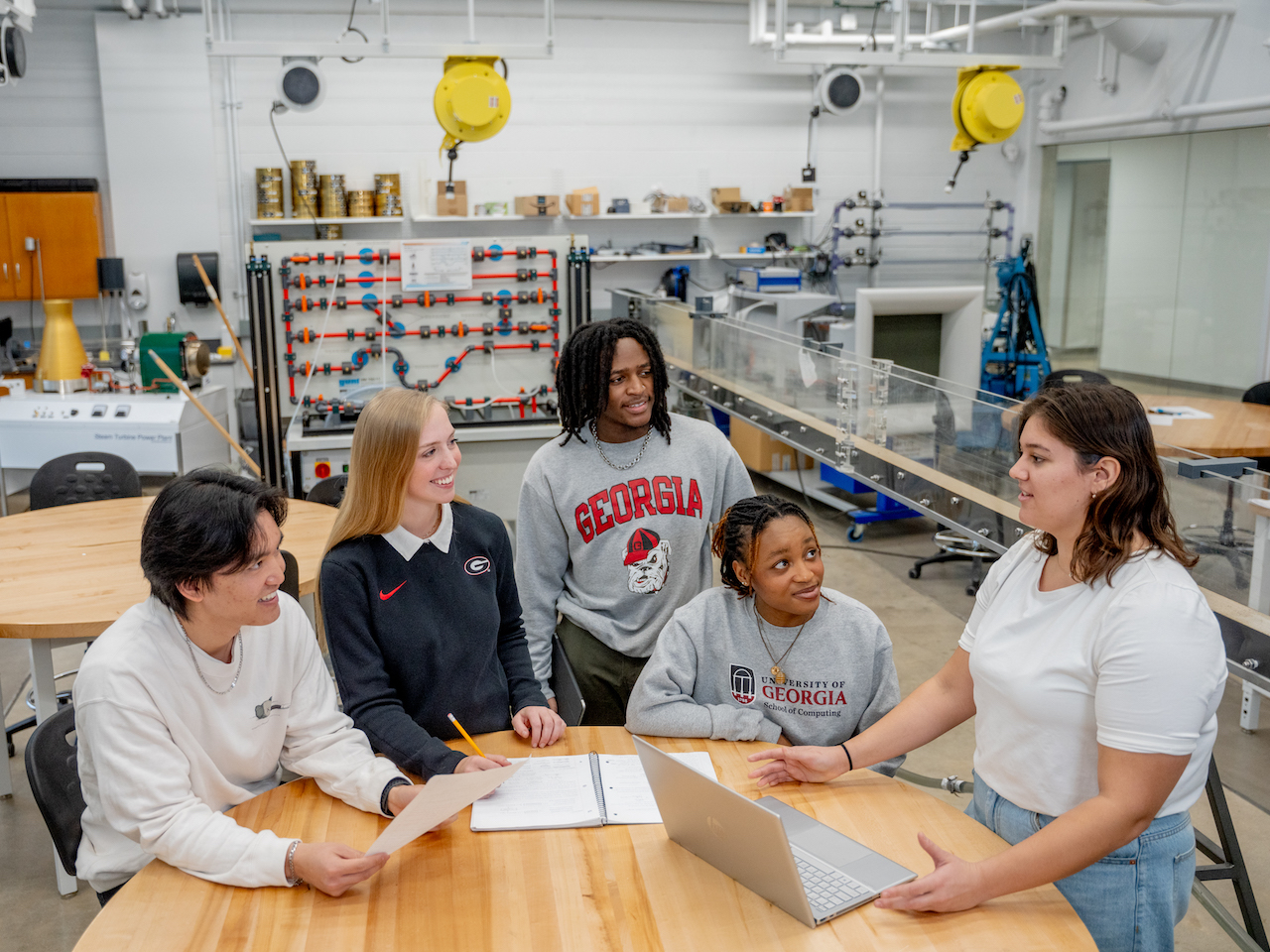 “Squeezing a molecule” may not have the same ring as “flipping a switch,” but researchers at the University of Georgia College of Engineering, working with scientists at two universities in the United Kingdom, have created a nanoscale on/off switch that works by mechanically manipulating a single molecule.
“Squeezing a molecule” may not have the same ring as “flipping a switch,” but researchers at the University of Georgia College of Engineering, working with scientists at two universities in the United Kingdom, have created a nanoscale on/off switch that works by mechanically manipulating a single molecule.
Designing a nanometer-long molecule that acts as an electronic switch, like the ones used to control a lamp, has been one of the major challenges in molecular electronics research. In the past, scientists have succeeded in building molecular-scale switches that use external stimuli such as light and electrochemical reaction but creating a simple mechanically controlled single-molecule switch has proven more difficult.
“We found by carefully designing and modifying the chemical structure of the molecule, not only can the switching behavior be shut down completely it can also be reinstated by slightly changing the chemical structure of the molecule,” said Kun Wang, a research fellow at the University of Michigan who worked on the project as a doctoral student at UGA. “More importantly, we discovered that changing the atom that bridges the side group and the main backbone of the molecule can tune the on/off ratio by several folds.”
The nano-switch works by mechanically elongating and compressing a molecular junction, a structure with a single molecule of dipyridyl sandwiched between two metal electrodes made of gold wire that’s a single atom wide. The researchers say their findings represent a significant expansion of the single-molecule electronics toolbox.
The team of researchers from UGA, Lancaster University and the University of Liverpool details its work in a paper published recently in Angewandte Chemie, a leading peer-reviewed European chemistry journal.
Researchers at Liverpool created the synthetic molecule used in the switch while UGA scientists measured the mechanical modulation of the nanostructure. Scientists at Lancaster performed theoretical simulations of the device.
“Our lab at the University of Georgia is the only place in the world that can perform the extraordinarily delicate measurement of the mechanical modulation of this type of nanostructure,” said Binqqian Xu, a professor in the College of Engineering and one of the study’s corresponding authors.
The researchers say their next step is to synthesize and test other molecules that may act as a molecular switch. In addition, they hope to gain a better understanding of the switching mechanism to enhance the on/off ratio and to improve the stability of the switch.
This project was supported by the U.K. Engineering and Physical Sciences Research Council (grants EP/H035184/1, EP/M005046/1, EP/N017188/1 and EP/M014452/1), U.S. National Science Foundation (grants ECCS 1231967 and ECCS 1609788), the European Commission (project 606728 of FP7 ITN “MOLESCO”) and the Iraqi Ministry of Higher Education (SL-20).


